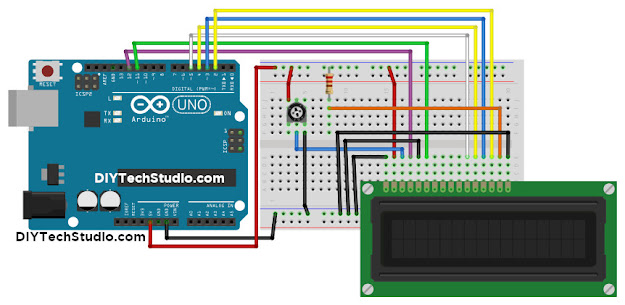First, connect the circuit according to the circuit diagram shared below
Next, connect the circuit to a Laptop or a Desktop and open your Arduino IDE
Next, install the library "LiquidCrystal" if it is not installed and upload the sketch "HelloWorld" which is under File > Examples > LiquidCrystal to test the circuit.
After uploading if you don't see any character displayed adjust the brightness using the trimmer until you get the display
Sketch
Sketch Start
#include <LiquidCrystal.h>const int rs = 12, en = 11, d4 = 5, d5 = 4, d6 = 3, d7 = 2;LiquidCrystal lcd(rs, en, d4, d5, d6, d7);void setup() {lcd.begin(16, 2);lcd.print("hello, world!");}void loop() {lcd.setCursor(0, 1);lcd.print(millis() / 1000);}
Sketch End
Sketch Explanation - Hello World
#include <LiquidCrystal.h> - Includes the library code for Liquid Crystal
const int rs = 12, en = 11, d4 = 5, d5 = 4, d6 = 3, d7 = 2; - Assigning the Pin Numbers
LiquidCrystal lcd(rs, en, d4, d5, d6, d7); - Creates a variable of type Liquid Crystal & initializes the library by associating to LCD interface pins.
void setup() {} - Setup function runs when you power the board or press reset button.
lcd.begin(16, 2); - Defining the LCD's Number of Columns (16) and rows(2)
lcd.print("hello, world!"); - Prints hello, world on the LCD Module
void loop() {} - Loop function runs statements inside it over and over again forever
lcd.setCursor(0, 1); - sets the cursor to column 1, row 2 and then prints the next print statement
lcd.print(millis() / 1000); - prints the number of seconds since reset
lcd.print(millis() / 1000); - prints the number of seconds since reset
Affiliate Links
Amazon USA
Amazon IND
Thank You For Reading !!!






No comments:
Post a Comment
Hi, Thanks for Commenting !!!